How to Add the Cast Icon to the Toolbar in Microsoft Edge?
The new Microsoft Edge is based on Chromium and has many features similar to the Chrome browser. The Cast feature for the Microsoft Edge browser was included as part of Windows 10’s first big update. Users can use their phone or tablet to cast a video on another device and still use their devices without interrupting the video. By default, the Cast icon will not be available in the toolbar of Microsoft Edge. For quick access, you can pin the Cast icon in the toolbar by using one of the methods in this article.

Method 1: Using the Browser Settings
Most of the settings that you want to configure for the Microsoft Edge can be found in the browser’s settings. The same goes for adding the Cast icon in the toolbar. However, unlike the other option, this one is a bit tricky. It doesn’t provide the adding option unless you click on it to find the devices. Once it starts searching for devices, then you can right-click on the icon and choose the option that pins the icon to the toolbar. Follow the below steps to see how it works:
- Open the Microsoft Edge browser by double-clicking on the shortcut or searching it through the Windows search feature.
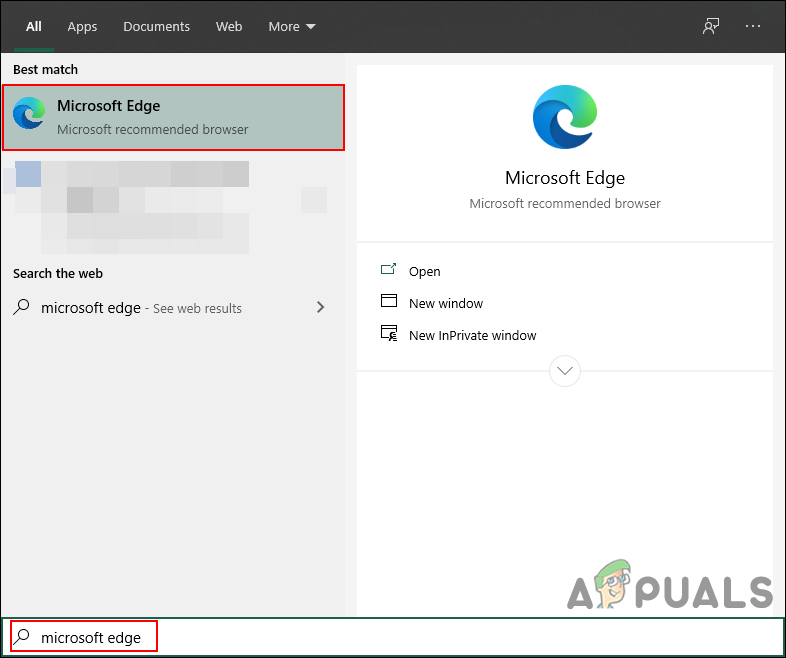
Opening the Microsoft Edge - Now click on the Settings and more (Alt+F) at the top right corner. Now select the More tools from the list of the context menu and then click on the Cast media to device option.
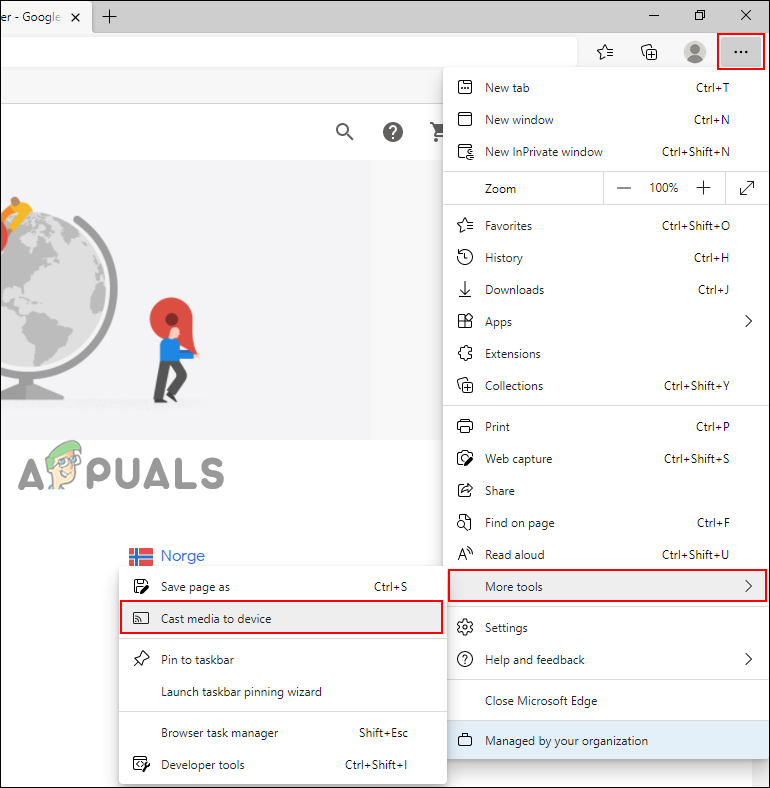
Opening Cast feature in Microsoft Edge - The icon for Cast will appear in the toolbar and it will start searching for any available devices. You can right-click on the icon and choose the Always show icon option.
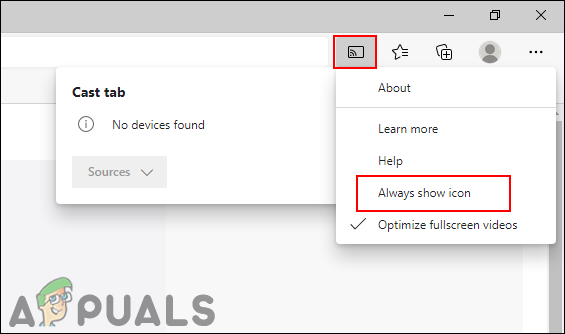
Pinning Cast icon to toolbar - Now the Cast icon will be added to the toolbar in the Microsoft Edge browser.
Method 2: Using the Registry Editor
Another method is by using the Registry Editor to add the Cast icon in the toolbar. This method is mostly for the administrators because standard users won’t be able to access the Registry Editor. It will also stop other users from changing the setting for the Cast icon by using the browser settings. If an administrator enables the Cast icon by using the Registry, then it will stay in the toolbar until it is disabled through Registry. Follow the below steps carefully to configure the setting:
- Press the Windows and R keys together to open a Run dialog box. Here type “regedit” and press the Enter key to open the Registry Editor. If prompted by the UAC (User Account Control), then click on the Yes button.
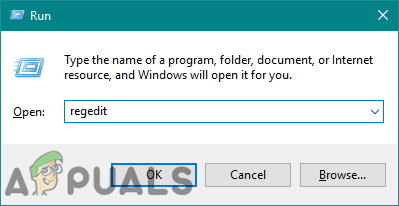
Opening the Registry Editor - If you want to create a Registry backup before making any new changes. You need to click on the File menu in the menu bar and then choose the Export option. Now select the location where you want to save it and name the file. Click on the Save button.

Creating a registry backup Note: You can always recover backup by clicking on the File > Import option. Then choosing the backup file that you previously saved.
- In the Registry Editor window, go to the following location as shown:
HKEY_LOCAL_MACHINE\SOFTWARE\Policies\Microsoft\Edge
- If the Edge key is missing, you can create it by right-clicking on the Microsoft key and choosing the New > Key option. Now name the key as “Edge“.
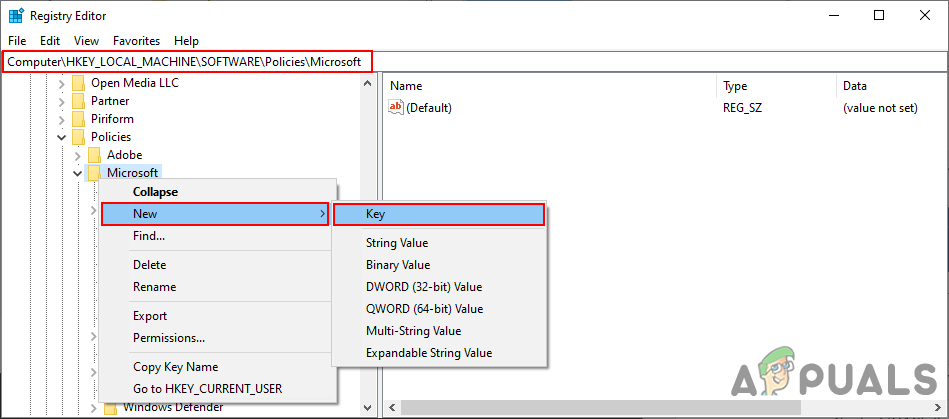
Creating the missing Edge key - Select the Edge key, right-click on the right pane and choose the New > DWORD (32-bit) Value option. Name the value as “ShowCastIconInToolbar“.

Creating a new value - Double-click on the ShowCastIconInToolbar value and it will open a small dialog box. Now if you want to add the Cast icon, set the value data to 1. If you want to remove the Cast icon, then set the value data to 0.
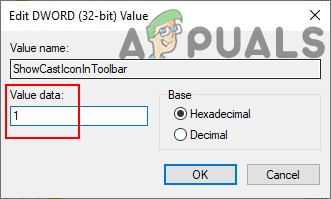
Changing the value data - If the settings are not applied instantly to the browser, you need to restart your system to apply the changes.
- You can always revert it back to default by deleting the ShowCastIconInToolbar value from the Registry Editor.
Method 3: Local Group Policy Editor
This method is an alternative to the Registry Editor method. It does a similar job as the Registry Editor method. However, this method isn’t available for Windows Home users. That is because the Group Policy Editor isn’t available for the Windows Home users. In addition, the policy files for the Microsoft Edge may be outdated on your system. The new Microsoft Edge browser will require the latest policy files to configure. We have included the steps for downloading and installing the new policy files on your system.
- Open any browser and navigate to the Microsoft site. Now you need to select the version details of your Microsoft Edge and click on the GET POLICY FILES button.
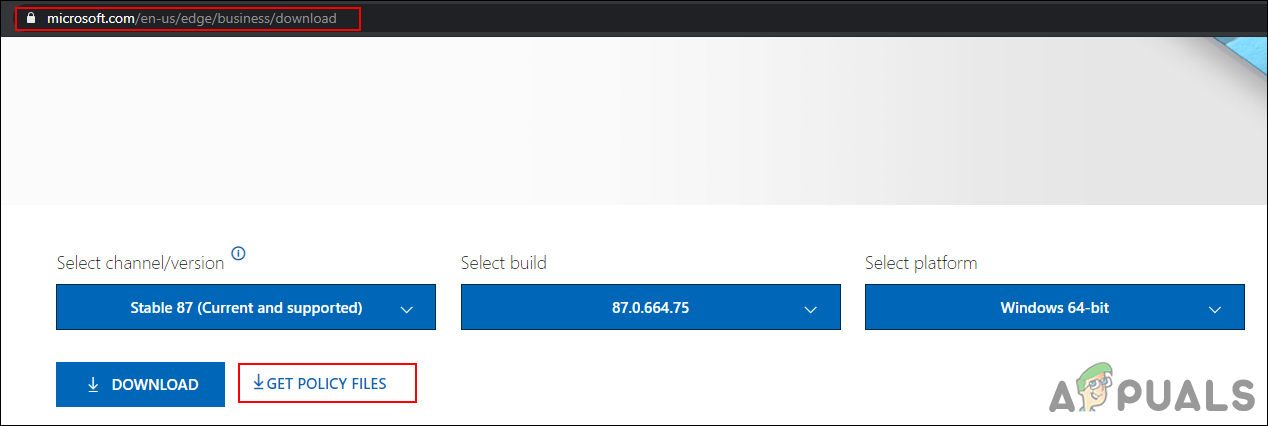
Downloading the policy files - Extract the downloaded zip file by using the WinRAR as shown below.
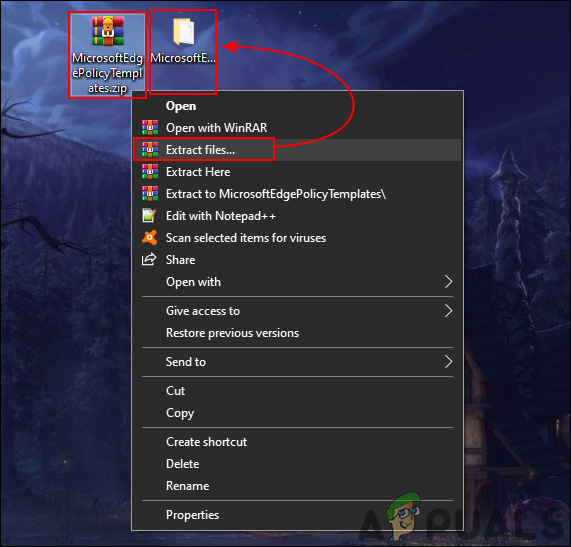
Extracting the zip file - Open the extracted policy files folder and go to the “MicrosoftEdgePolicyTemplates\windows\admx” path. You need to copy the “msedge.admx” and “msedge.adml” files and then paste them into “C:\Windows\PolicyDefinitions” folder.

Copying the latest policy files Note: The language file ADML will be found in the language folder. Copy it from one folder to another.
- Press the Windows and R keys together on your keyboard to open the Run dialog box. Now type “gpedit.msc” and press the Enter key to open the Local Group Policy Editor window.
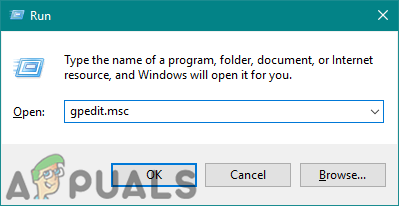
Opening the Group Policy Editor - Go to the following path in the Local Group Policy Editor window as shown:
Computer Configuration\ Administrative Templates\ Microsoft Edge\ Cast\
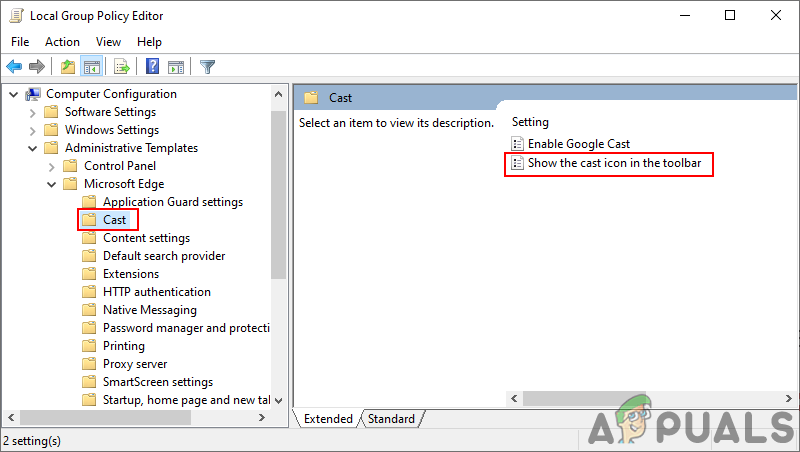
Navigating to the setting - Double-click on the setting named “Show the cast icon in the toolbar” and it will open in another window. If you want to add the Cast icon, then change the toggle option to Enabled. If you want to remove the Cast icon, then change the toggle option to Disabled.

Configuring the setting - Lastly, you can click on the Apply/Ok button to save the changes.
- You can always revert this back to default by changing the toggle option to Not Configured in step 6.





